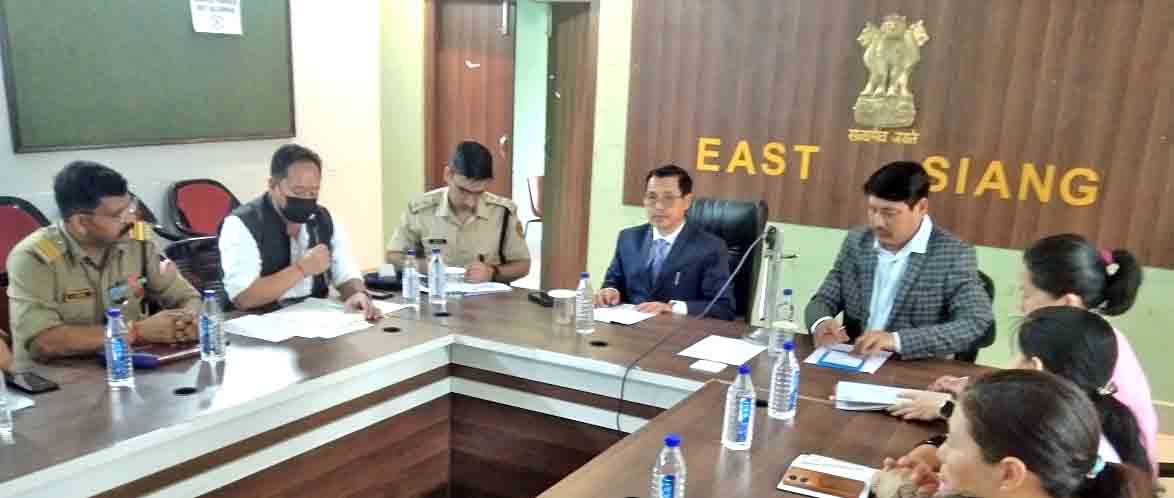-
Former DDSE arrested for illegal appointments in education …
-
Tobacco control cell raids shops near schools, destroys seized…
-
Arunachal Pradesh Raj Bhavan celebrates Gujarat & Maharashtra…
-
Internationally recognized counseling center opens in Ziro
-
Batchmates pay tribute to late Sangay Lhaden, dedicates …
-
Security forces arrest over ground worker of NSCN-KYA
-
Precious Cargo: The Journey of 2 Steel Trunks From…
-
 Governor emphasises on using technology on the ground
Governor emphasises on using technology on the ground
-
AAPSU stops debate on Chakmas at Rajiv Gandhi University
-
 East Siang DA takes stock of monsoon preparedness
East Siang DA takes stock of monsoon preparedness
At a time when most of the states are finding it difficult to choose the most-optimum methodology in taming the Covid-19 pandemic, the remarkable turnaround by the National Capital Territory of Delhi has not only become a national talk, but also eliciting global attention. The revival can aptly be called a major one since, just a month earlier, Delhi had always been in news only for the opposite reason i.e. rising cases and deaths. Armed with the confidence from the success, the Delhi Chief Minister on Monday delivered the message much-awaited by the citizens there that there is no need for further lockdown(s), signifying that the stage is now set for a return to general as well as economic normalcy. It is hardly surprising that the Centre is currently pursuing plans for those states currently reeling under the pandemic’s burden to adopt the ‘Delhi model’ as a benchmark in the Covid fightback.
Statistical figures may be boring, but at least a few will be necessary to explain Delhi’s journey to the safe zone. In the first half of June with average daily deaths of 91 and an equally unsettling figure of daily positive additions, a fear was gradually cementing among health experts that by the end of July, the total number of cases will be nothing less than 5.5 lakhs. But, as on Monday, it’s only a little above the 1.3 lakh mark and most significantly, with 1.6 lakh+ recoveries which is almost 88 %, it's far ahead from the national recovery which is swinging currently around 64%. This has placed Delhi to the 10th spot currently among all states and UTs in the country’s overall Covid graph. Significantly, the success also received recognition from the Delhi HC on Monday wherein it was acknowledged that it’s because of the steps like increasing the number of ambulances, 24x7 active helplines, revamping testing facilities and creating plasma banks, among other result-oriented and time-specific measures. To tell facts, these have really been the real contributing factors to the turnaround. But for the continued stress on testing, ensuring oximeters, a well-managed ambulance system, availability of beds with focus on ICUs, the feat would not have been possible within such a short period. That the factors of testing followed by isolation continue to remain the central aspect in the pandemic’s containment has been proved once more in Delhi’s case. From an average of 5,500 tests per day in the initial months, testing was increased to 21,000 daily in early July with a rate of 50,000 per million, making it the national highest.
The main takeaway from Delhi’s success in ‘flattening the curve’, however, is that it’s not always the citizen-centric restrictive measures that count. The fundamentals do matter at the end of the day.

Kenter Joya Riba
(Managing Editor)She is a graduate in Science with post graduation in Sociology from University of Pune. She has been in the media industry for nearly a decade. Before turning to print business, she has been associated with radio and television.
Email: kenterjoyaz@easternsentinel.in / editoreasternsentinel@gmail.com
Phone: 0360-2212313

